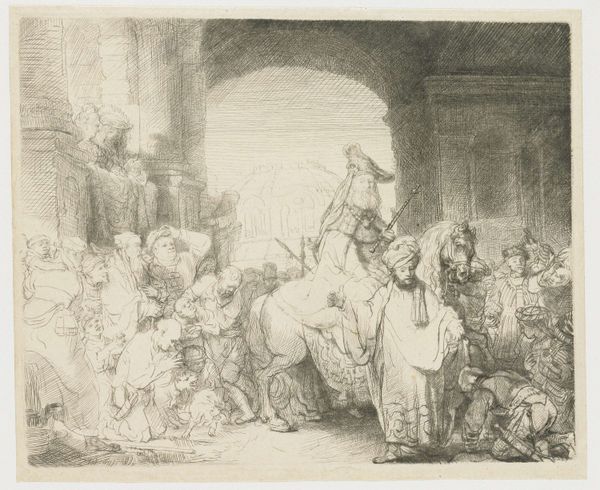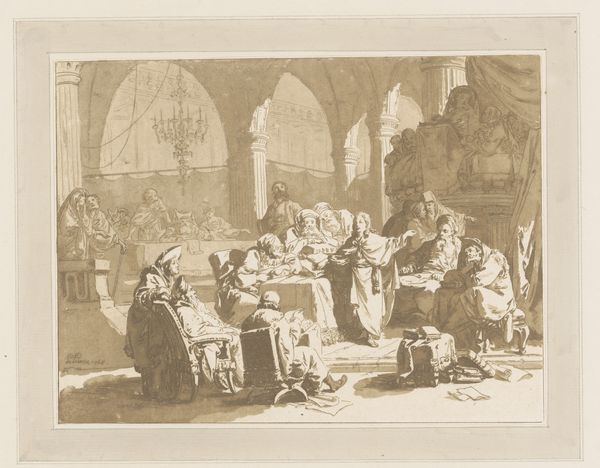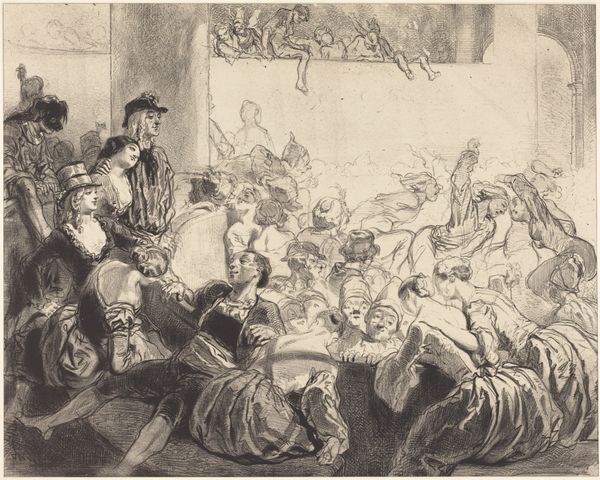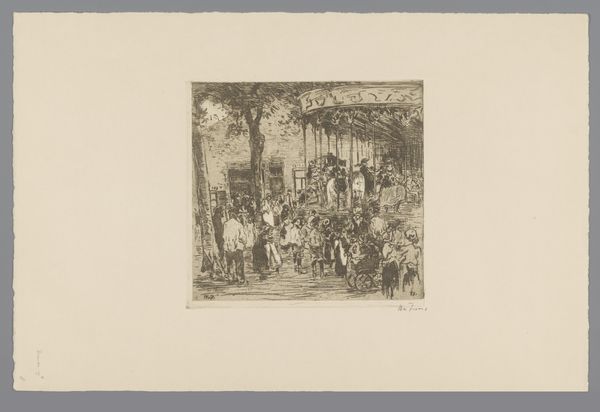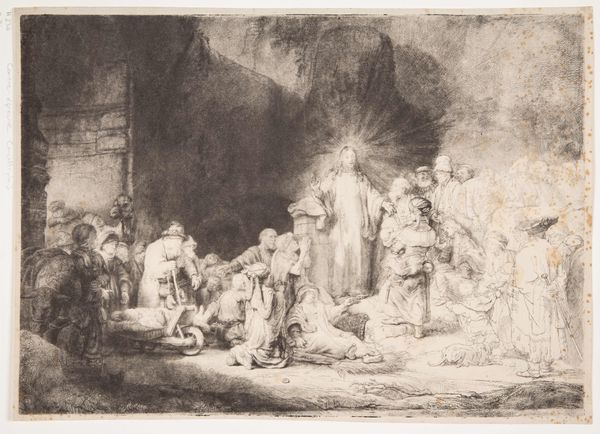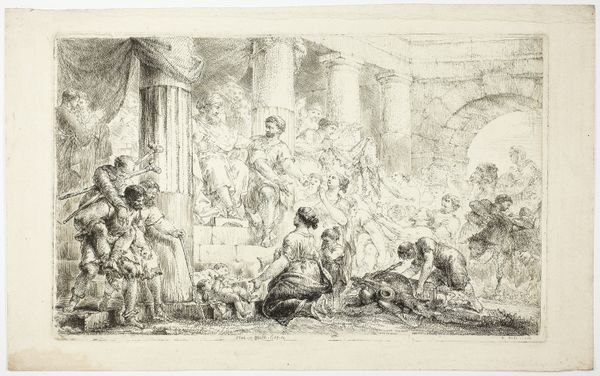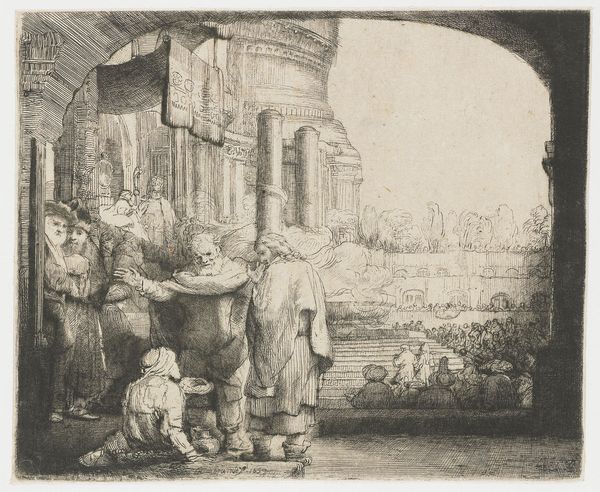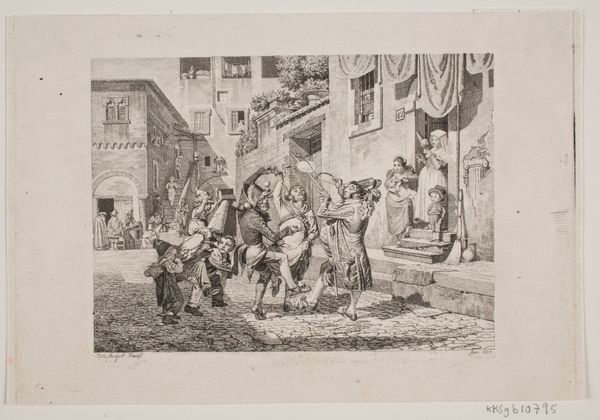
drawing, print, etching
#
portrait
#
drawing
#
narrative-art
#
baroque
# print
#
etching
#
history-painting
Copyright: Public Domain
Rembrandt van Rijn made this print, "The Triumph of Mordecai," using etching, a process of mark-making on metal. The plate would have been covered with a wax resist, and then scratched into with a needle. The plate is then submerged in acid which bites away the exposed metal leaving an impression of the image. The quality of the lines varies, indicating the artist's skillful control over the depth of the etching, to create light and shadow. Look at the way the lines are densely packed in the darker areas, and more sparse where the light falls. This print is a clear product of labor, both Rembrandt's and those involved in the production of his materials. The etching process itself is time-consuming and requires specialized skills. Additionally, consider the labor involved in mining and processing the metal for the plate, as well as the production of the etching tools and acid. Rembrandt’s masterful use of line in this print is not just a demonstration of technical skill, but an engagement with the social and economic realities of his time.
Comments
minneapolisinstituteofart almost 2 years ago
⋮
Queen Esther was raised by her cousin Mordecai, an exiled Israelite living in Ahasuerus's kingdom. Because Mordecai exposed a plot on his life, the king asks his chief minister, Haman, to suggest a reward for a favored subject. Mistakenly thinking he will be the honoree, Haman recommends letting the person comport himself like the king. Ironically, Mordecai then rides in majesty, while his humiliated enemy Haman has to lead the procession (Esther 6). Lucas van Leyden (see Mia P.68.200) conceived Mordecai as a modest man uncomfortable with recognition and oblivious to the crowd. Rembrandt paid tribute to Lucas (see Mia P.80.32) by borrowing two of his figures-cleverly, two who pay homage (in Rembrandt, the men holding hats near the horse's rear). He also invented a balcony with Esther and Ahasuerus, and starkly positioned Haman below Mordecai, playing up the theme of reversed expectations. The distant gallows in Lucas's engraving alludes to Haman's fate: he will be hanged for plotting the destruction of the Israelites. For contemporary audiences, the victorious Israelites symbolized the triumph of the Dutch over their Spanish oppressors.
Join the conversation
Join millions of artists and users on Artera today and experience the ultimate creative platform.

